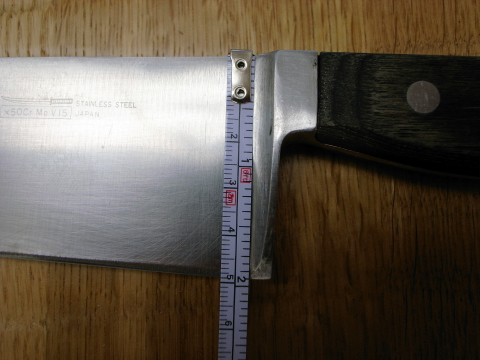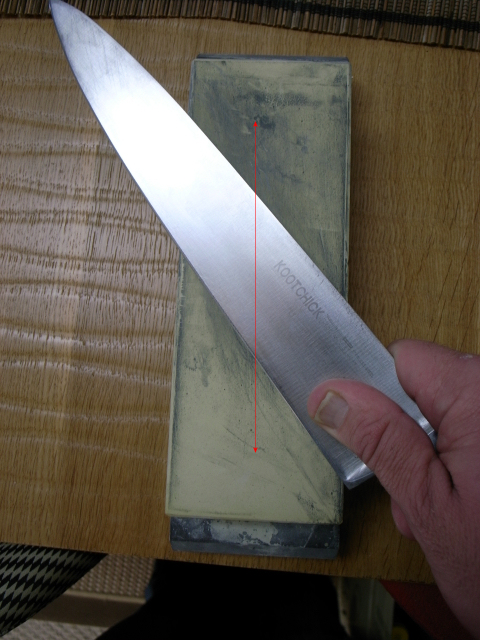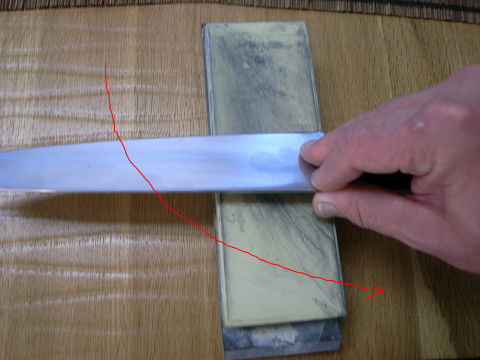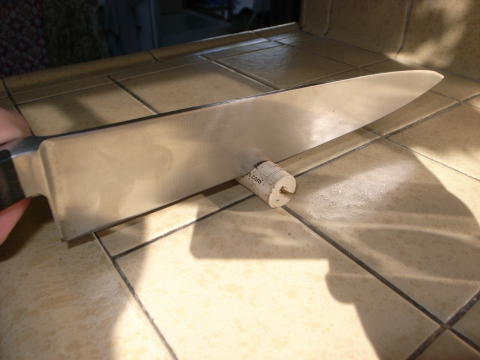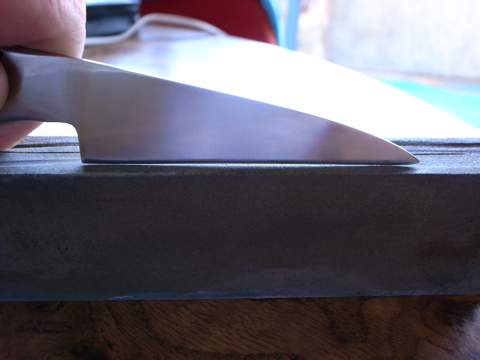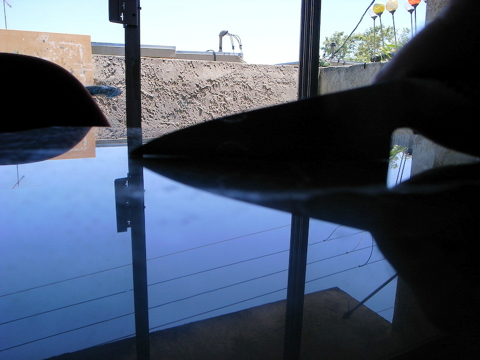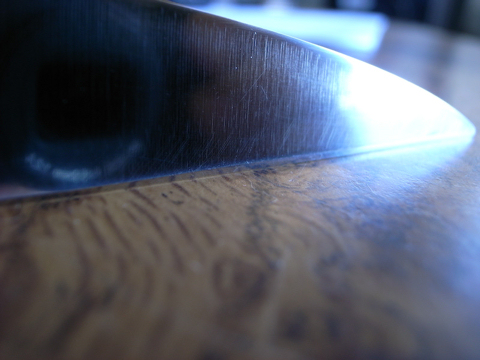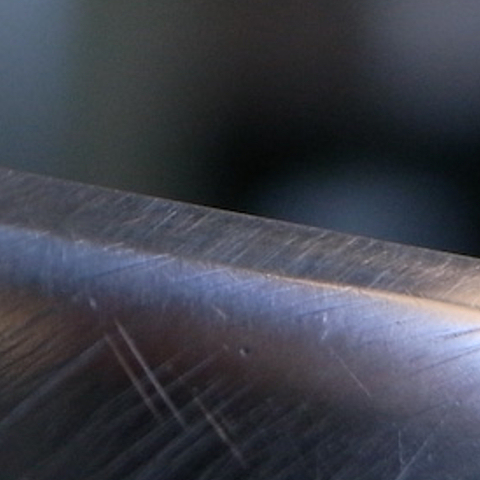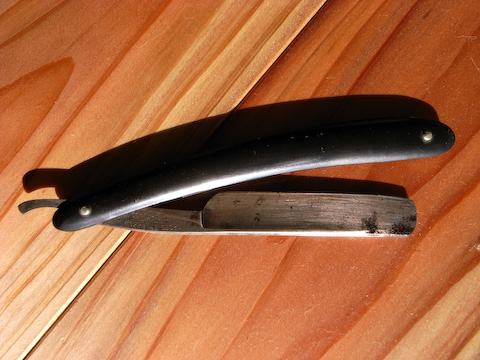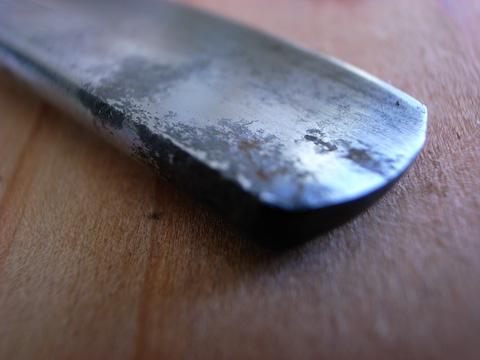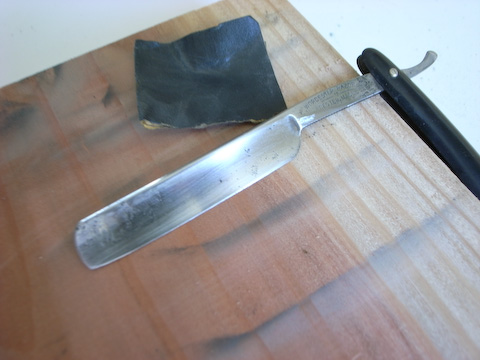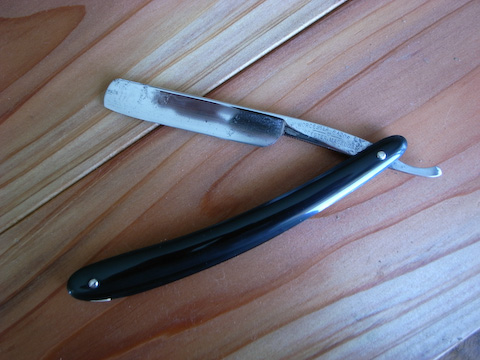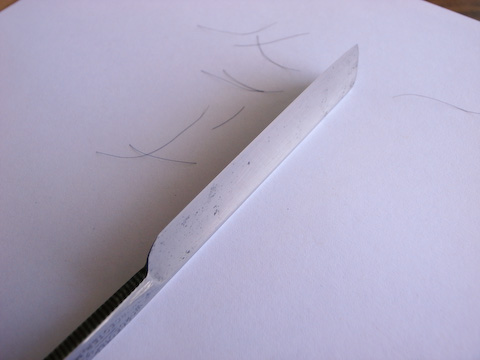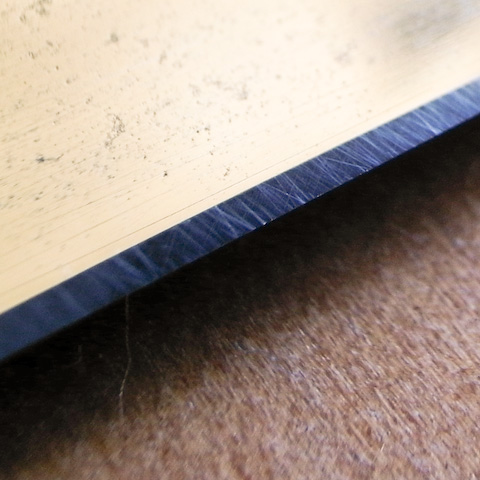First you need to make sure that the knives are straight and determine if they have chips or other damages. You also need to check if the edge bevel is correct for the knife, all this need to be corrected before sharpening could begin. Straighten and do all repairs, for repairs I recommend a really coarse DMT plate wish makes it fast and easy, and for rebevelling something in the 500# grit range depending on how hard the steel is.
Before starting the sharpening, prepare the stones and make sure they are flat and have them soak if needed. Find the right bevel angle check my post about “What edge angle to use on different knives” for a general idea what angle to use. For an easy way to find the angle is to measure the height of the blade at the heel, let say that your knife is 2” high at the heel as the knife in the picture bellow.
In this case you could just divide the height of the blade, to get an estimate height that you need to hold the spine above the stone. Bellow I have a large heavy duty knife of bad quality so I decided to give it an dull edge angle of 30°. I divided the height of my blade with 2 and that tells me that I have to hold the spine one inch above the stone, see picture bellow.
Here is a table of rough estimate of values to divide the blade height with for different angles.
For 30° divide by 2
For 24° divide by 2.5
For 20° divide by 3
For 15° divide by 4
For 12° divide by 5
When you have fixed everything you need and the angle is right you could start sharpening. I usually start with a coarse stone 700# grit till I get a smoth straight edge with a burr, and continue with a medium stone in the 1000# – 2000# grit range making sure that I keep it tight and have a light burr. I usually holding the knife diagonal over the stone to avoid wobbling, see picture bellow.
After this I deburr with some light edge trailing strokes on both sides, and a few strokes on a cork or a piece of wood, before moving on to the finishing stones. See pictures bellow.
I usually start the finishing work with a fine stone in the 4000# – 6000# grit range and using lighter and lighter pressure, this stage it’s a lot about feel and sound and if the ground work is done on coarser stones 10-20 strokes per side should be enough. This should be enough for most ordinary kitchen knives, just deburr on a cork. At this stage you should be able to shave with the knife with a little bit of pressure.
If you want you could continue with super fine stones all up to the 30k# grit, but I most often only use a 8k# and 12k# stone to get that shiny finish. Of course you could continue even more, with lapping films and strops with different dressings until you get that dark deep mirror finish. On my own knives I usually do it in this order, depending of what knife it is.
Fast sharpening: 2000#, 6000# and leather strop with blue magic. For a more over excessive way: 320# DMT, 500# Bester, 1000# Sigma, 2000# Bester great feel, 2000# more like a 4000# Unknown brand, 6000# Nubatama, 8000# Kitayama, 12k# Shapton, Balsa with polishing cream, Leather strop with Autosol or Mothers and finally horse butt leather strop without dressing.
Things to remember
- Make sure stones are flat and clean.
- Don’t use to much pressure, let the stones do the work.
- Avoid doing it to fast, so you don’t wobble.
- try your best to keep the angle, after a while it will come naturally.
Magnus Pettersson hand sharpener, now serving the whole Westside with free pickup and delivery: Santa Monica, Brentwood, Pacific Palisades, Venice, Marina Del Rey, Culver City and West LA.
For free pickup and delivery on the Westside, call/txt 310-486-6068 or email.

